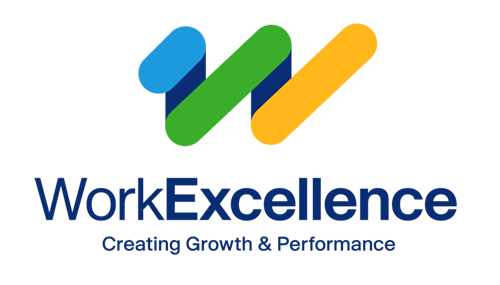With a new hybrid way of working becoming widely accepted, how can leaders structure their meetings so more people feel they can share their ideas and be heard? Read this insightful interview with Steve Gran, co-founder of Work Excellence, to learn how meetings can be improved by encouraging active participation, accountability, structure, and achievement of goals. Learn more about effective meeting guidelines and rules for running a meeting to increase the productivity of your team.
Modern Meeting Management Q & A with Steve Gran, Co-founder of Work Excellence
Q: How can leaders manage meetings so more people feel they can share their ideas? What are the basic rules for running a meeting?
A: It is simple to say but oftentimes not easy to do so; have a meeting structure. Have a common structure for the meeting and agreed-upon meeting behaviors. When teams and organizations have structure (way of meeting) people always feel more comfortable sharing their ideas, because they know the rules of engagement. Create a structure that reflects the values of your organization or adapt a successful meeting structure that already exists, which helps in employee engagement with remote workers too. All meetings should clearly state the purpose of the meeting, the outcomes the team wants to accomplish, as well as the roles and responsibilities of the meeting participants. For an effective meeting session, know the purpose and outcomes of the meeting and have the appropriate meeting behaviors checked during and at the end of the session. An example is having a meeting behavior that states: All ideas will be spoken and heard, or all participants are to share their ideas openly. This must be one of the important points for effective meeting guidelines. It should be the role of the meeting facilitator, leader, or monitor to ensure this behavior is honored. At the end of the meeting ask a simple check question; Were all ideas shared? Did everyone feel heard? If it was not the case, the people in the meeting should discuss solutions and changes at the next meeting to ensure all ideas have been heard and everyone’s voice is honored. The organization must follow some basic rules for running a meeting successfully.
Q: As organizations adopt hybrid work environments, how can we ensure remote attendees feel heard just as much as those in the office? Can you please provide some effective meeting management tools as well?
A: The change to remote work and the use of technology can change the way teams and individuals interact in a meeting. Employee engagement with remote workers must be encouraged in meetings. Regardless of your location, when you meet, and what technology is used, these different dynamics and their impact can be minimized with a common meeting structure and the corresponding behaviors to support that structure. As I said before, the combination of meeting structure and meeting behaviors plus the ongoing checking and adjusting during and after a meeting help individuals feel heard no matter where they are or how they connect to the meeting. The appropriate meeting structure, effective meeting management tools, and corresponding meeting behaviors are even more important in this remote setting. So, if you do not already have what I described, talk about implementing it now. If you already have a structure, ask if it serves you and the organization. If it does not, get together and agree on the structure and behaviors and move forward from there.
Q: What is the best way for a leader to encourage accountability in a meeting? How to run a meeting template?
A: The best way to get accountability in a meeting is to make things visible. Action items, decisions, and parking lot items are captured and followed up on by those who own them. As these important meeting elements are being discussed and documented, write items in a way that honors the voice of the person doing the work, those parts of the decision, or tabling something that has come up but needs to be discussed later. Encourage employee engagement with remote workers. Let them describe it in their own words and then ask them when they can commit to getting something done. If that is not okay, discuss and gain agreement on what is appropriate. Out of those conversations, accountability flows naturally. Again, having strong roles and meeting behaviors can help here. For example, a meeting behavior could be, we will document meeting output in this way (you define) and be accountable to that work. Also, at the beginning of each meeting, time should be used to review open action items and previous meeting follow-ups. This can be a time trap, so participants need to come prepared to discuss their work and remember to focus on the highlights and only jump into the details as necessary. Again, strong roles, gaining alignment, and clarity are key to accountability.
Q: What can a leader do to avoid wasting time in meetings? Can you please provide some more guidelines like 15 tips for running effective meetings?
A: First and foremost is to have a plan for every meeting. Documenting a clear purpose and specific outcomes can help avoid wasted time. A common meeting structure used by an organization is even more beneficial in eliminating wasted time. Everyone plays by the same rules. Without a common structure, meetings are usually subject to “personal preference” and lend themselves to high levels of wasted time. Topics that do not meet the meeting purpose and outcomes should be tabled and or moved to the appropriate meeting. The second is monitoring your meetings. The monitor role is one of the most important roles and the most difficult to perform. Monitors should focus on staying on track and limiting off-topic discussions. Staying focused on the purpose and achieving the outcomes is the role of a good meeting monitor. Meeting structure and behaviors again prove their worth with wasted time. Statistics throughout the years have always claimed that 50% of the time in meetings is wasted. Good structure, roles, and behaviors can assist in preventing and identifying wasted time. However, they are not enough unless there is a strong check and adjustment. Teams and individuals need to provide their perspectives on how the team can be more efficient with the use of time in a meeting. So, check and adjust. Ask at the end of your session; Is there anything we can do to make this meeting more effective? Did we waste any time today? Having a plan and structure can help, but only to a point.
A team, a group of people, must own its own meeting. Here is where another meeting behavior statement that can hang on a wall and can be reviewed remotely at any time. It may say “ We will actively look for ways to make our meetings better.” Also, take a step back from time to time and look at all the meetings people are using to run and improve the organization. Make a list of the meetings you, a team, or the organization uses. Rate them. Are they a waste of time? If so, discuss ways to make them better or maybe better yet combine or eliminate the unnecessary ones.
Q: How should a leader concisely define the goals and importance of a meeting? Are there specific rules for running a meeting?
A: We have always found the best and simplest place to start is with a clear purpose, “why” are we meeting, and specific outcomes of “what” we want to get out of our time. Write it down, put it in an email, and review it at the beginning and end of each meeting. If you meet your purpose and outcomes, go get that work done. If you missed the mark on that purpose and an outcome or two, reflect, check, learn from that and adjust in the next meeting. These two questions around a purpose (“why”) and outcomes (“what”) can help any leader be more concise and focus on the important aspects of their meeting. Good meeting roles, like the monitor, can help, and it is just as important to share those roles so all in the meeting have a stake, they are engaged, and all are actively working to meet the purpose and outcomes of the meeting.
Get the Most Out of Your Meetings with Effective Meetings Guidelines
Give us a call today to learn more about how we can help your team get on the same page and make meetings more productive. (844) 448-0488

